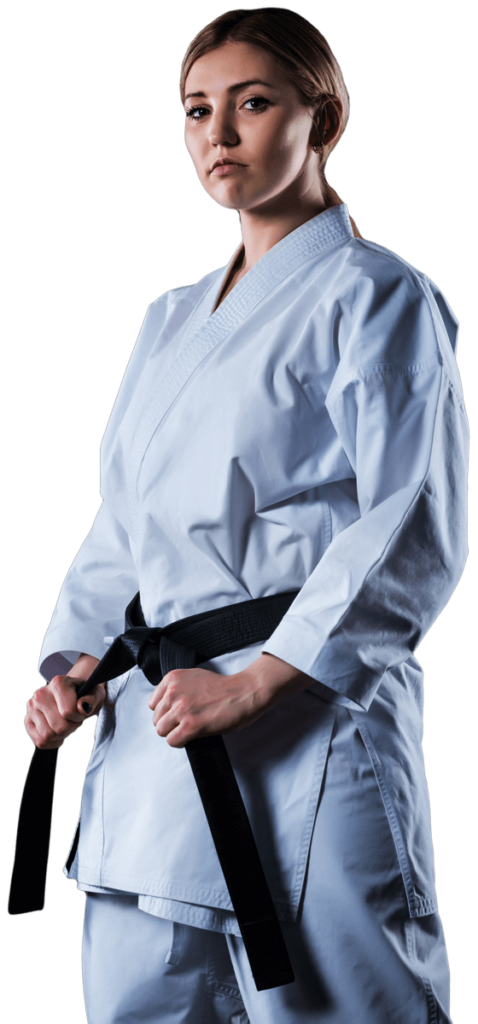Karate equipment (Gis, Belts, etc.)
In the world of karate, equipment plays a crucial role in the practice of this martial art. Not only is it necessary for the safety of practitioners, it is also a symbol of the tradition and discipline inherent in this martial art. This article looks in detail at the traditional equipment used in karate, including the Gi, belts, protectors and other accessories.
1. The Gi of Karate
The Gi is the traditional costume worn by karate practitioners, known as karatekas. The origin of the Gi dates back to 20th-century Japan, when judo master Jigoro Kano adapted traditional Japanese ceremonial clothing for martial arts training. Since then, the Gi has become a recognized symbol of the martial arts.
A typical karate Gi consists of two main parts: a jacket (Uwagi) and pants (Zubon). Both are generally made from cotton, although other materials such as polyester or cotton-polyester blends are also commonly used.
The jacket is designed to be tough and durable, able to withstand the rigors of karate training. It is traditionally white, a symbol of purity and simplicity. It’s loose enough to allow great freedom of movement, but snug enough not to hinder the wearer.
The pants are also designed to be robust and comfortable. It usually has an elastic waistband or drawstring belt for a secure, personalized fit. Like the jacket, the pants are wide enough to allow total freedom of movement.
It’s important to note that the Gi de karate varies in weight and style. Lighter Gis are generally preferred for training in summer or warmer climates, while heavier Gis are preferred for training in winter or colder climates. In addition, heavier Gis are often used in kata competitions for their impressive appearance.
2. Karate belts
The karate belt, or Obi, is another essential piece of karate equipment. It symbolizes the karateka’s rank and experience. Karate belts are usually colored, with each color representing a different level of skill and experience.
The order of belt colors may vary from one style of karate to another, but a commonly used system is: white, yellow, orange, green, blue, purple, brown and black. Each color represents a stage in the karateka’s journey, black being the highest level.
The black belt itself has several levels, or Dan. The transition from one Dan to another is usually marked by rigorous testing and requires years of dedicated practice.
3. Protective equipment
In karate, various types of protective equipment are used to ensure the safety of practitioners. This includes mouth guards, shin guards, shells for men, chest protectors for women, and karate gloves.
Mouthguards are used to protect the teeth and jaw from direct blows. Shin guards are used to protect the legs from kicks. Shells and chest protectors are used to protect sensitive areas of the body. Finally, karate gloves are used to protect hands and wrists when striking.
It should be noted that the use of this protective equipment may vary according to the style of karate and the organization. Some traditional karate styles may not use protective equipment at all, while others may require it for certain practices or competitions.
4. Other equipment
Other equipment commonly used in karate includes punching bags, punching paddles, makiwara (traditional punching board), and training dummies. These tools are used to practice striking techniques and to develop power, precision and technique.
In conclusion, karate equipment is essential for the practice of this martial art. Not only is it necessary for the safety of karatekas, it is also a symbol of karate tradition and discipline. Choosing the right equipment, which is comfortable and adapted to your needs, is an important step in your karate journey.


